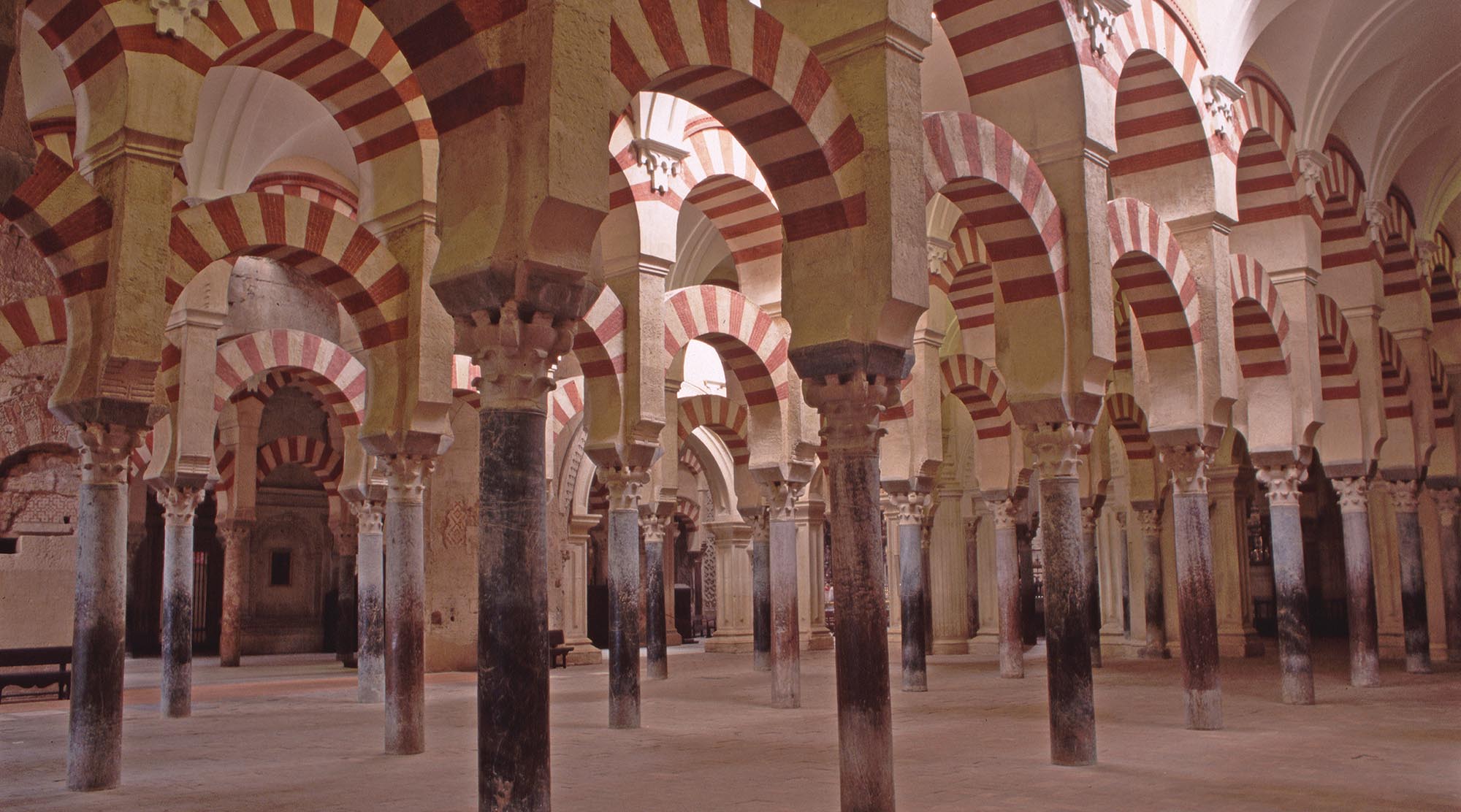9New Empires and Common Cultures
600–1000 CE

More information
A side shot of a large open area in the Mosque of Cordoba that shows many columns in rows holding up arched ceilings.Each arch has stripes that are painted radially across them.
Before You Read This Chapter
GLOBAL STORYLINES
Religion and Empire: The Islamic Caliphate, the Tang Dynasty, and Christendom
- The universalizing religion of Islam, based on the message of strict monotheism conveyed by the Prophet Muhammad, originates on the Arabian Peninsula and leads to the rapid spread of Muslim rule across Afro-Eurasia.
- The expanding Tang dynasty in East Asia consolidates its bureaucracy and extends its influence into central and East Asia, but struggles with religious pluralism.
- Christianity splits over religious and political differences, leading to a divide between Roman Catholicism in the west and Greek Orthodoxy in the east.
CHAPTER OUTLINE
FOCUS QUESTIONS
- How and where did Islam, Buddhism, and Christianity spread in the period 600–1000 CE?
- What were the organizational structures of the Islamic caliphate, Tang China, and Christendom?
- What were the internal divisions within the Islamic, Chinese, and Christian worlds?
- What was the impact of commercial exchange across Afro-Eurasia on religion and empire during this period?
In 754 CE the caliph al-Mansur, ruler of the Muslim dynasty known as the Abbasids, decided to relocate his capital from Damascus (Islam’s first capital outside Arabia, which had been founded by the Abbasids’ predecessors, the Umayyads) to a site closer to the Abbasids’ home region on the Iranian plateau. Islam was barely a century old, yet it flourished in its new setting. For both practical and symbolic reasons, al-Mansur chose to build his new capital near an unimposing village called Baghdad. Not only did the site lie between Mesopotamia’s two great rivers, at the juncture of the canals that linked them, but it was also close to the ancient capital of the earlier Sasanian Empire and the site of ancient Sumerian and Babylonian power. By locating the seat of Abbasid power in Baghdad, al-Mansur could reaffirm Mesopotamia’s centrality in the world while advancing the universalizing ambitions of Islam outward in all directions.
Al-Mansur’s choice had enduring effects. Baghdad became a vital crossroads for commerce. Overnight, the city exploded into a bustling world entrepôt. Chinese goods arrived by land and sea; commodities from Inner Eurasia flowed in over the Silk Roads; and cargo-laden camel caravans wound across Baghdad’s western desert, linking the wealth of the capital with Syria, Egypt, North Africa, and southern Spain. The centralization that the Abbasids imposed from Baghdad intensified the movement of peoples, ideas, innovations, and commodities throughout the region.
While Islamic rule was gaining ground in central Afro-Eurasia, Chinese might was surging in East Asia under the Tang dynasty. Yet the Abbasid caliphate and Tang China were clearly different worlds. In the Islamic empire, politics were inextricably intertwined with a universalizing religious mission: to bring humankind under the authority of the one God as had been articulated by the Prophet Muhammad. In contrast, the Tang state had no such grandiose religious goals; the ruling elites supported religious variety within China, and they did not use Buddhism to expand their control into areas outside China. Instead, the Tang rulers expected that their neighbors would copy Chinese institutions and pay tribute as symbols of respect to the greatness of the Tang Empire. While more limited in scope in this period, Christianity also strived to extend its domain and add to its converts. With Muslim soldiers, traders, and scholars traversing Southwest Asia and North Africa, Chinese influences taking deeper root in East Asia, and Christendom extending itself across Europe, religion and empire once again intertwined to provide the social foundation across much of Afro-Eurasia.